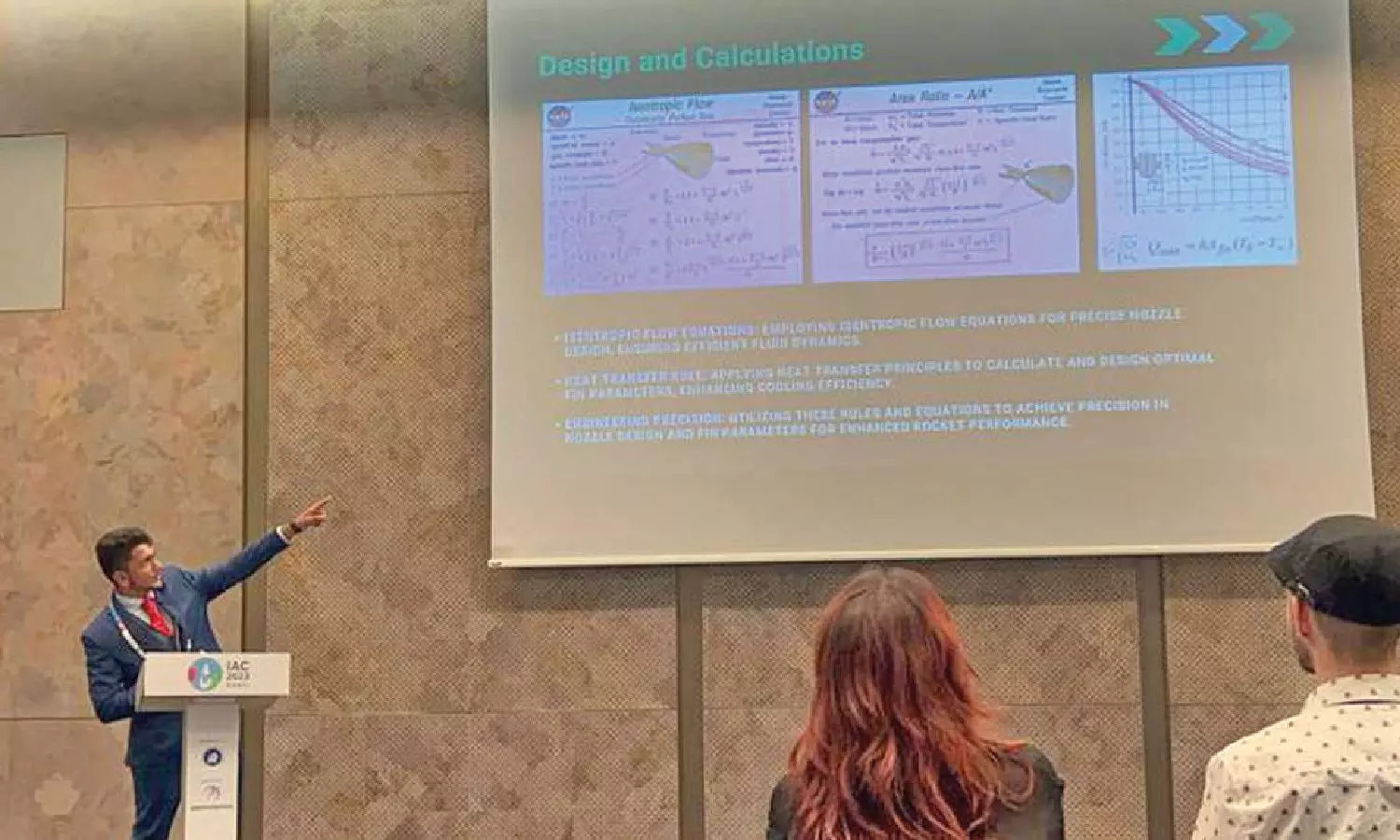From gazing night sky to becoming NASA’s citizen scientist
Becoming a NASA citizen scientist was a step-by-step process for Sriram. The journey began by exploring the NASA citizen science website, where he found opportunities open to individuals globally, irrespective of background or nationality.;

During a presentation at IAC 2023
CHENNAI: Sriram Kumar’s initiation into the realm of space science took place when he was in Class 11. He and his friend conceptualised their first space project at the annual science competition organised by the Tamil Nadu Science and Technology department at the Birla Planetarium. “We focused on a topic that even seasoned scientists grapple with today – space debris mitigation and removal. The positive outcome not only bolstered my confidence but also ignited a passion for delving deeper into the mysteries of the cosmos,” he starts, who has now undertaken more than 20 research projects and contributed to numerous publications. Sriram’s commitment to achieving in the space domain is fueled by curiosity and determination.
Bewildered by the enchantment of the night sky since his childhood, Sriram’s path knocked the threshold of space research during his visit to the Indian Space Research Organisation launch facility. “Standing before the huge structure, I was captivated not just by the physical magnitude of the rocket but also by the complex scientific orchestration required for its journey into space. At that moment, I realised my desire to contribute my skills and knowledge toward advancing the efficiency and sustainability of space exploration,” says the space researcher.
During the third year of college, he embarked on a transformative project, titled Controlled Combustion of Solid Rocket Propellants with Electromechanical Subsystems. The motivation behind this endeavor was to explore the possibility of controlling the combustion parameters of solid propellants—an aspiration deemed implausible for decades. “As our initial validations yielded promising results, we delved deeper into the intricacies of the project. This was selected for presentation at the prestigious 73rd International Astronautical Congress (IAC) 2022 in Paris. At the conference, we had the privilege of interacting with Dr Somnath, the Chief of ISRO, and Enrico Palermo, Chief of the Australian Space Agency. After that we met Dr K Sivan, the ex-chairman of ISRO, who conveyed his joy and commendation for our contributions,” shares the ambitious scientist. He received acknowledgment at the IAC 2023 in Baku, Azerbaijan, where he was identified as the ‘Solid Propulsion Guy’.
Becoming a NASA citizen scientist was a step-by-step process for Sriram. The journey began by exploring the NASA citizen science website, where he found opportunities open to individuals globally, irrespective of background or nationality. “My responsibilities included identifying asteroids and even having the honour of naming them. This experience allowed me to contribute actively to the scientific community,” states the citizen scientist, who has discovered two provisional asteroids so far.
The 21-year-old draws inspiration from Dr APJ Abdul Kalam and says, “Dr Kalam’s legacy extends beyond his intellectual prowess; it’s embodied in his ability to transcend barriers and showcase that anyone can excel with the right mindset. The impact of his kindness, dedication to nurturing young minds, and significant contributions to the field resonates deeply with me.”
Giving insights about his current projects, Sriram explains, “I am working on diverse methodologies for managing and producing components with extreme hardness and strength, specifically for advanced aerospace applications. This involves the examination of material composition, coupled with the implementation of innovative heat treatment techniques.”
Sriram credits his achievements to the support received from his family and professors who encouraged him to pursue his goal, despite consecutive failures. He mentors over 100 students across the state, guiding them in projects and research, free of cost. Simultaneously, he is working on seven different research topics, with plans for publication by the end of the year. “My ultimate goal is to make a significant contribution to the field of space science and serve as an inspiration for millions of students and young minds to follow a similar path,” he hopes.

